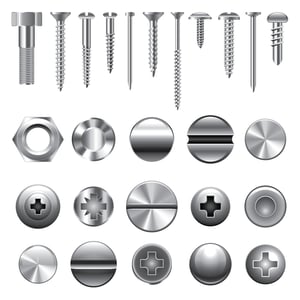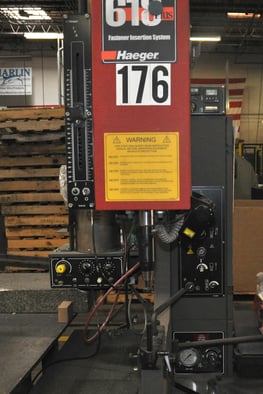 Factory Automation has helped to make many custom metal fabrication tasks safer, faster, and more efficient. From automated laser cutters that leave clean, smooth cuts in metal, to wire bending machines that can rapidly bend thick steel wires into the exact right shape for a metal basket frame, to welding machines that can fuse two pieces of metal together in just a few milliseconds, Marlin Steel has the right tools for the job.
Factory Automation has helped to make many custom metal fabrication tasks safer, faster, and more efficient. From automated laser cutters that leave clean, smooth cuts in metal, to wire bending machines that can rapidly bend thick steel wires into the exact right shape for a metal basket frame, to welding machines that can fuse two pieces of metal together in just a few milliseconds, Marlin Steel has the right tools for the job.
For many sheet metal forms such as hard disk drive casings, however, simply bending, cutting, and welding the metal may not be enough. Sometimes, a sheet metal basket or part needs to have specialized hardware inserts to allow the final product to work with other parts.
An example of this would be adding nuts to a sheet metal form so that another part can be attached to it using screws.
So, how does Marlin Steel make the insertion of specialized tooling faster, safer, and more efficient? By using specialized CNC insertion machines to automate the process!
The Challenges of Hardware Insertion, and How Automation Addresses Them
 One of the major problems with trying to use manual techniques to handle hardware insertion is that any manual process will be painfully slow. If your manufacturing process can finish dozens of sheet metal forms each minute, but hardware insertion for one type of insert takes up to a full minute, you’ll wind up with a pretty bad production bottleneck as a lone employee struggles to attach floating nuts to sheet metal while a small mountain of identical pieces of sheet metal pile up behind their work station.
One of the major problems with trying to use manual techniques to handle hardware insertion is that any manual process will be painfully slow. If your manufacturing process can finish dozens of sheet metal forms each minute, but hardware insertion for one type of insert takes up to a full minute, you’ll wind up with a pretty bad production bottleneck as a lone employee struggles to attach floating nuts to sheet metal while a small mountain of identical pieces of sheet metal pile up behind their work station.
This can take a fast, lean production cycle and bring it to a grinding halt as the entire process has to wait on its slowest step.
With automated hardware insertion, the process for adding specialized tooling is reduced to a couple of seconds as the piece is inserted into the machine and the tooling is added. With up to six tons of force, machines such as the Haeger 618 Plus can easily force hardware into a sheet metal form without damaging it.
Another issue is that of safety. Trying to manually insert hardware into a piece of sheet metal carries with it a risk of mishaps such as tools slipping and harming the employee, a risk that grows over time as the employee gets tired from repetitious motion. With automated insertion, human interaction is minimized, reducing the chances that an accidental injury will occur.
Finally, there is the quality of the part to consider. With automated insertion, the hardware is inserted at a consistent depth and angle every time. This way, what works for one part will work for all of the parts that are a part of the same production run.
With manual insertion, there will always be that element of human error leading to inconsistency and rejected parts. Each time a part is rejected, the insert either has to be re-done or the whole part might need to scrapped and replaced if there was damage to it.
How Marlin Automates Hardware Insertion
Currently, Marlin Steel uses a Haeger 618 Plus machine with an added Modular Autofeed System (MAS) to handle hardware insertion tasks.
The Haeger 618 is a fully hydraulic-based CNC insertion machine that can insert hardware with anywhere from 400 to 1,200 lbs. of force. While a bit slower than an air over hydraulic system, the force setting of the Haeger is extraordinarily reliable, being able to repeat the same level of force within +/- 1% of the force set by the user. This means less time wondering if the right amount of force is going to be used, and more time feeding the next part in line.
The autofeed system that is attached to the Haeger 618 plus can feed up to 2,000 fasteners or other inserts per hour to the machine, and can be switched from one type of insert to another in just under three minutes. This minimizes the amount of downtime between hardware insertion operations, and keeps production from getting bottlenecked at the insertion process.
With this and other pieces of factory automation, Marlin Steel delivers Quality Engineered Quick® to clients both in the U.S. and abroad.


.gif)


